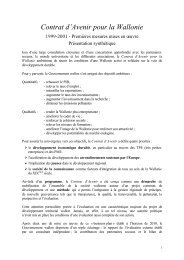You also want an ePaper? Increase the reach of your titles
YUMPU automatically turns print PDFs into web optimized ePapers that Google loves.
Active network<br />
The active network layer refers to the electronic network equipment needed to<br />
bring the passive infrastructure alive, as well as the operational support systems<br />
required to commercialize the fibre connectivity. The party in charge of this layer<br />
will design, build and operate the active equipment part of the network.<br />
Retail services<br />
Once the passive and active layers are in place, retail services come into play. This<br />
is the layer where the internet connectivity is packaged as a service for consumers<br />
and businesses. Besides enabling those services technically, the company<br />
responsible for this layer is also in charge of customer acquisition, go-to-market<br />
strategies, and customer service. The retail service provider may also decide to<br />
offer premium services from the content layer, such as IPTV (more in Chapter 4).<br />
Types of <strong>FTTH</strong> organisation<br />
Each network layer has a corresponding function. The network owner is in charge<br />
of the first layer, although they will probably outsource its construction to a third<br />
party. The wholesale provider owns the active equipment, while the retail<br />
services are provided by the internet service provider (ISP). These three functions<br />
may <strong>be</strong> found as departments within the same company, or they may <strong>be</strong> under<br />
the control of different organisations.<br />
In the case of a vertically integrated model, a single player will own all three layers<br />
of the network. This is often the case for incum<strong>be</strong>nt operators, like for example<br />
Orange in France, Telefonica in Spain and Verizon in the United States. On the<br />
other end of the spectrum, we see the fully separated ownership of the different<br />
layers, as is the case in some parts of the Netherlands where Reggefi<strong>be</strong>r controls<br />
the passive infrastructure, BBNed runs and operates the active network and<br />
provides wholesale access, and various retail service providers package the<br />
broadband access with their services and sell directly to the end-users.<br />
Here are some typical <strong>FTTH</strong> operator models:<br />
Vertically integrated<br />
As mentioned above, the vertically integrated model means that one operator<br />
controls all three layers of the network, and consequently, if a second operator<br />
wishes to also offer broadband and telephony services in the same area, he will<br />
have to build his own infrastructure, operate it and market it directly to the endusers.<br />
This is a clear form of infrastructural competition.<br />
21 www.ftthcouncil.eu

















